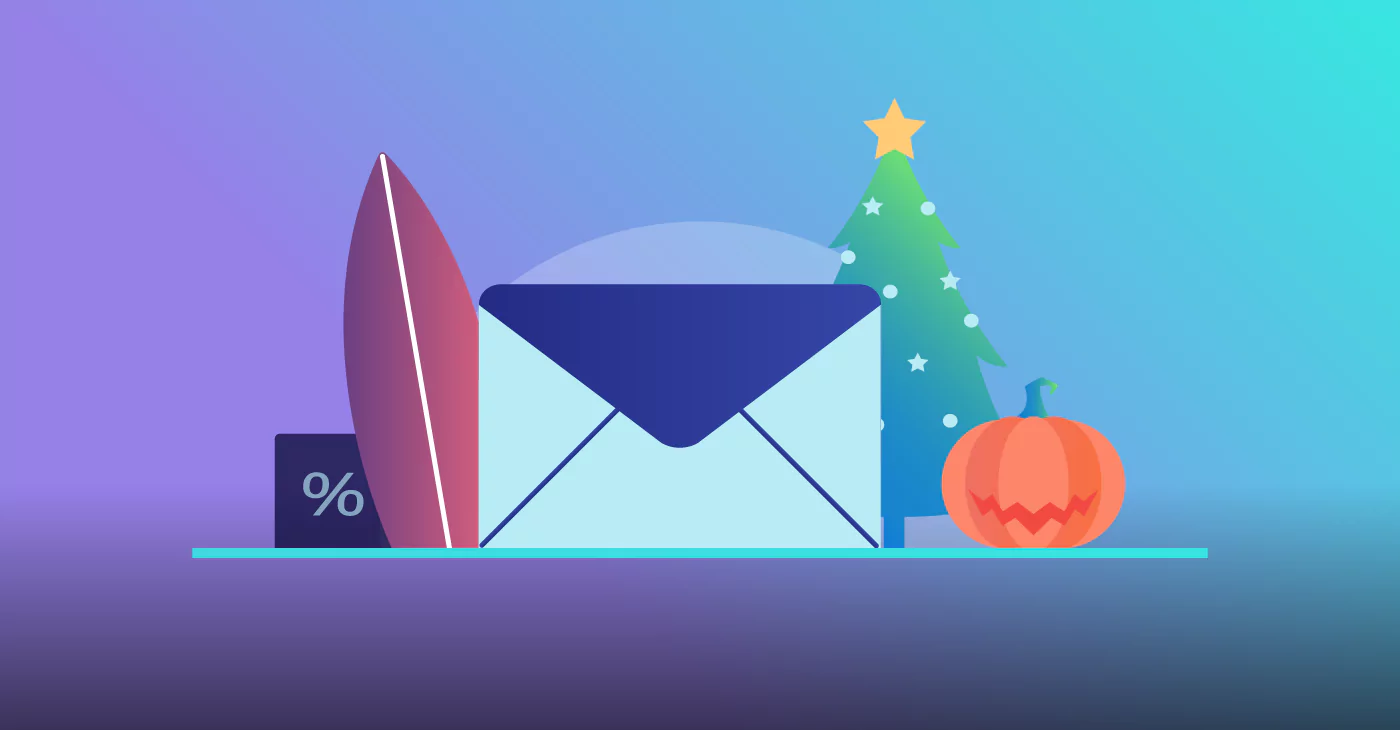Clickbait Email Subject Lines and Emojis: Balancing Attention-Grabbing Tactics and Subscriber Trust
November 7, 2023 5 min read

In the fiercely competitive world of email marketing, grabbing the attention of recipients and enticing them to open emails is an ongoing challenge for marketers. To stand out in crowded inboxes, some marketers turn to attention-grabbing tactics, such as clickbait subject lines and emojis. While these strategies may achieve short-term gains in open rates, they are not without controversy. The use of clickbait subject lines, emojis, and other attention-grabbing techniques raises ethical concerns and can potentially harm a brand’s reputation and trust with subscribers.
Clickbait Subject Lines: The Tempting Trap
Clickbait subject lines are designed to pique curiosity and lure recipients into opening emails. They often tease exciting or sensational content but may not fully deliver on the promise. While clickbait can lead to higher open rates initially, it can lead to disappointment when subscribers realize the email content does not live up to their expectations. This practice can erode trust, lead to decreased engagement, and increase the likelihood of recipients marking emails as spam.
What are Clickbait Email Subject Lines?
We’ve more or less covered this, but it never hurts to reiterate. Clickbait email subject lines are attention-grabbing and often false or far-reaching phrases or statements used to entice recipients into opening an email. They are designed to create curiosity, evoke emotions, or promise something intriguing, with the sole goal of increasing email open rates.
Characteristics of Clickbait Email Subject Lines
- Sensationalism: Clickbait subject lines often use exaggerated language or make bold claims to capture the recipient’s attention.
- Incomplete Information: They may provide just enough information to pique curiosity but not enough to fully convey the content of the email.
- Teasing Content: Clickbait subject lines typically hint at exciting, exclusive, or shocking content inside the email to lure recipients into opening it.
- Emotional Appeal: They may appeal to emotions such as fear, curiosity, excitement, or urgency to encourage immediate action.
- Exaggerated Benefits: Clickbait subject lines may promise significant benefits or rewards to motivate recipients to open the email.
Examples of Clickbait Email Subject Lines:
- “You won’t believe what’s inside this email!”
- “Top secret strategies for guaranteed success!”
- “This shocking news will change your life!”
- “You’ve won a prize – open to claim it now!”
Emojis: A Double-Edged Sword
Emojis have become a popular way to add visual appeal and express emotions in email subject lines. When used thoughtfully, emojis can enhance the message and make emails stand out in a cluttered inbox. However, overusing emojis or using them inappropriately can come across as unprofessional and diminish the credibility of the email. Additionally, some email clients may not render emojis correctly, leading to a disjointed user experience.
Misleading Content: A Breach of Trust
Attention-grabbing tactics can sometimes extend beyond subject lines and seep into the email content itself. Presenting misleading or exaggerated claims to hook recipients can lead to a sense of deception. When subscribers feel misled, they are more likely to unsubscribe or disengage with the brand altogether. Maintaining authenticity and providing valuable content that aligns with the subject line is crucial for preserving trust and long-term engagement.
Impact on Brand Reputation: The Price of Sensationalism
Overreliance on clickbait and attention-grabbing tactics can negatively impact a brand’s reputation. Recipients may perceive the brand as manipulative or lacking integrity. A brand associated with clickbait and sensationalism may struggle to be taken seriously, and its credibility may suffer. Building trust with subscribers is a delicate process that requires consistency, transparency, and delivering on promises made in subject lines.
Risk of Deliverability Issues: Spam Traps and Filters
Using attention-grabbing tactics excessively may increase the likelihood of emails being marked as spam. Spam traps and email filters are becoming more sophisticated in detecting deceptive practices. High spam complaint rates can harm a sender’s reputation and deliverability, affecting the success of future email campaigns.
Balancing Creativity and Ethics
In the world of email marketing, capturing the attention of recipients is a fundamental goal. Creative headlines and emojis in email subject lines can be powerful tools when executed thoughtfully and responsibly. By combining creativity with ethical practices, marketers can enhance the user experience, increase open rates, and foster positive engagement with subscribers.
While the desire to increase open rates and engagement is understandable, it is essential for marketers to strike a balance between creativity and ethical practices. Here are some best practices to consider:
- Be Genuine: Deliver on the promises made in subject lines and provide valuable content that aligns with subscribers’ expectations.
- A/B Testing: Use A/B testing to assess the impact of different subject lines and content approaches to understand what resonates best with your audience.
- Emojis in Moderation: Use emojis thoughtfully and sparingly to enhance the subject line’s message rather than overpower it.
- Transparency: Avoid deceptive practices and communicate openly with subscribers about your intentions.
- Customer-Centric Approach: Focus on meeting the needs and preferences of your audience, rather than resorting to sensationalism.
- Respect Subscriber Preferences: Allow subscribers to customize their communication preferences and respect their choices.
Examples of Ethical Clickbait Subject Lines
- “Discover 5 Expert Tips to Boost Your Productivity”
- “Limited-Time Sale: Get 20% Off Your Favorite Products”
- “Unlock Exclusive Insights from Industry Leaders”
- “This Week’s Newsletter: Must-Read Articles for You!”
Remember, these are only ethical if the email content actually includes what the subject line states or alludes to.
Creative Use of Emojis
Emojis can add a visually appealing and expressive element to email subject lines. When used creatively and thoughtfully, emojis can enhance the message and make the subject line stand out in a busy inbox. Here are some best practices for the creative use of emojis:
- Relevance: Emojis should complement the subject line’s message and be relevant to the email content.
- Consistency: Use emojis consistently with your brand voice and style to maintain a cohesive and professional image.
- Emphasize Emotions: Emojis can express emotions and tone, enhancing the subject line’s meaning without overpowering it.
- Test Renderings: Ensure that emojis render correctly across various email clients and devices to maintain a seamless user experience.
Examples of Creative Use of Emojis in Subject Lines
- 🎁 Last Chance: Special Gift Inside!
- 🌟 New Arrivals: Discover What’s Trending 🌟
- 🚀 Don’t Miss Our Summer Sale! 🌞
- 🔥 Limited Time Offer: Save Big Today!
If you’re looking for some help with your subject lines to ensure they aren’t considered clickbait, you can check out our Free Email Subject Line Generator today.
While clickbait subject lines, emojis, and attention-grabbing tactics may momentarily boost open rates, they come with controversies and potential risks. In the long run, ethical and customer-centric approaches that prioritize trust and valuable content are more likely to foster strong and lasting relationships with subscribers. By finding the right balance between creativity and ethics, marketers can achieve both short-term success and sustained engagement in their email marketing campaigns.






